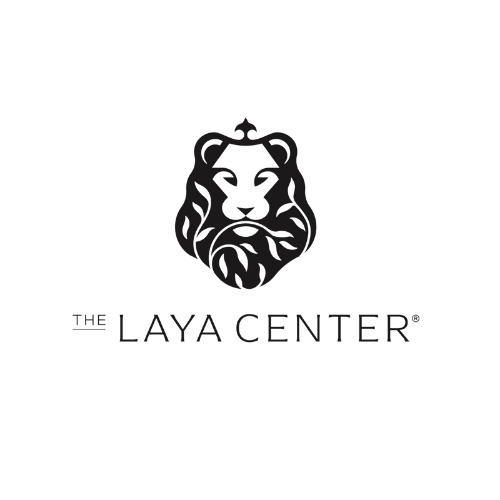Light Therapy for S.A.D. and Beyond
Light therapy—or phototherapy, classically referred to as heliotherapy—is a method recognized by scientific medicine for the treatment of various diseases. It includes exposure to lights that range on the color and wavelength spectrum in order to improve cellular and molecular response.







Light Therapy can be used for the entire body, giving benefits from head to toe. This simulation of natural spectrum light can do everything from improve skin and skin imbalances to decrease pain or treat depression. Here are some of the conditions we treat at The Laya Center with our full body Light & Infrared Therapy…
SAD
Types of depression that don't occur seasonally
Jet lag
Sleep disorders
Adjusting to a nighttime work schedule
Dementia
Pain & Inflammation
Skin issues (wrinkles, acne, scars)
Wounds (slow healing)
Carpal tunnel
Arthritis
Muscle recovery
Balancing hormones
Weight loss
Boosting collagen in the body
Cellular repair
Depression
Light Therapy works on your biological clock by aligning your brain’s 24-hour cycle (aka circadian rhythm). It balances the activation of serotonin circuitry in your brain, which is a key component in mood regulation, contributing to stable and consistent sleep patterns and increased alertness. Light therapy is a way to treat seasonal affective disorder (SAD) and certain other conditions by exposure to specific wavelengths of light. SAD is a type of depression that occurs at a certain time each year, usually in the fall or winter. During light therapy at The Laya Center, you will combine Infrared, Ozone, and specific Color/Light Therapy at a wavelength between 520 - 630nm. At the lower end (520nm) of that spectrum, you will experience a release of mental tension with Green Light Therapy. However, with Red Light Therapy at 630nm, a deeper cellular rejuvenation occurs.
Pain Relief
Light Therapy has proven to be versatile for treating many pain types, including chronic, joint, neck, osteoarthritis, and more. Because it provides targeted pain relief, it's incredibly versatile for various conditions. Because Red Light Therapy is higher on the spectrum, it is the most effective for pain relief.
Because of its general safety, red light therapy can be used as much as needed to relieve pain. When combined with the effects of Infrared, the penetrable wavelength is extended to between 800-1200nm which is about 7mm more depth than RLT alone. This combination increases the scope of the treatment to include the healing of ulcers. [1] It's excellent for anyone with chronic, joint, and neck pain, osteoarthritis, bursitis, carpal tunnel syndrome, diabetic foot ulcers, foot neuropathy, psoriasis, rheumatoid arthritis, and pain in the female organs. Plus, Light Therapy can be used as often as it's needed, up to three times per day per target area.
Skincare
LED light therapy is a popular noninvasive skin treatment for acne, sun damage, wounds, and other skin problems. The treatment uses varying wavelengths of light to trigger the skin’s natural healing processes to repair the skin. Several treatments are necessary to see results.
Research from the medical journal Anais Brasileiros de Dermatologia found red light therapy to promote healing by minimizing inflammatory cells. This results in newly stimulated blood vessels (angiogenesis), increased collagen production and boosted fibroblast production.
BLUE LED is used to treat acne-prone skin as it works as an antibacterial to stop breakouts in their tracks, while also stabilizing overactive oil production and reducing the appearance of active inflamed acne lesions. While blue LED works well as a stand-alone treatment, it can also be used with strategic skincare products to enhance the skin clearing benefits.
RED LED is used to treat acne, fights periodontitis and dental infections, prevents recurring cold sores, diminishes wrinkles, reduces the side effect of cancer treatments such as oral mucositis, and promotes rejuvenation.
Purple LED is a combination of red and blue wavelengths, offering dual benefits of both skin clearing (blue) and anti-ageing (red). Purple is also beneficial for cellular oxygenation and regeneration to promote enhanced skin fitness and vitality.
Yellow LED is used as a restorative therapy for sun damaged complexions. It can also assist with reducing redness, swelling and rosacea to improve overall skin tone and balance.
Green LED is used to address hyper-pigmentation, freckles and age spots by breaking down clusters of melanin that form discolorations. It neutralizes, balances, and stabilizes the skin to reduce oil secretion. The green/blue setting enhances cell energy and metabolic promotion.
WHITE/LASER LED is used to penetrate the skin deeply in order to speed up living metabolic tissue to improve the appearance of fine lines, wrinkles, and sagging skin.
LED Face Mask for targeted penetration.
Weight Loss
For those overwhelmed with countless weight loss methods, red light therapy may provide a solution. This method aids in weight loss in a few ways:
Boosted cellular metabolism: Energized cells lead to better performance, minimized inflammation, and improved cellular reproduction. This leads to enhanced metabolism and better-functioning organs.
An increase in muscle mass: Muscle mass growth is promoted when exposed to red light therapy. The more muscle mass you have, the more energy is needed. This means more calories are burned when resting. A study that exposed athletes to red light therapy found the subjects to have enhanced muscle recovery and increased muscle mass.
Better regulated thyroids: Under-performing thyroids (aka hypothyroidism) have been linked to excessive weight gain. Another study found red light therapy to decrease autoimmune activity, which aids in restoring thyroids to their normal function of regulating the metabolism.
[1] - NIH website - Light-emitting Diodes: A Brief Review and Clinical Experience

